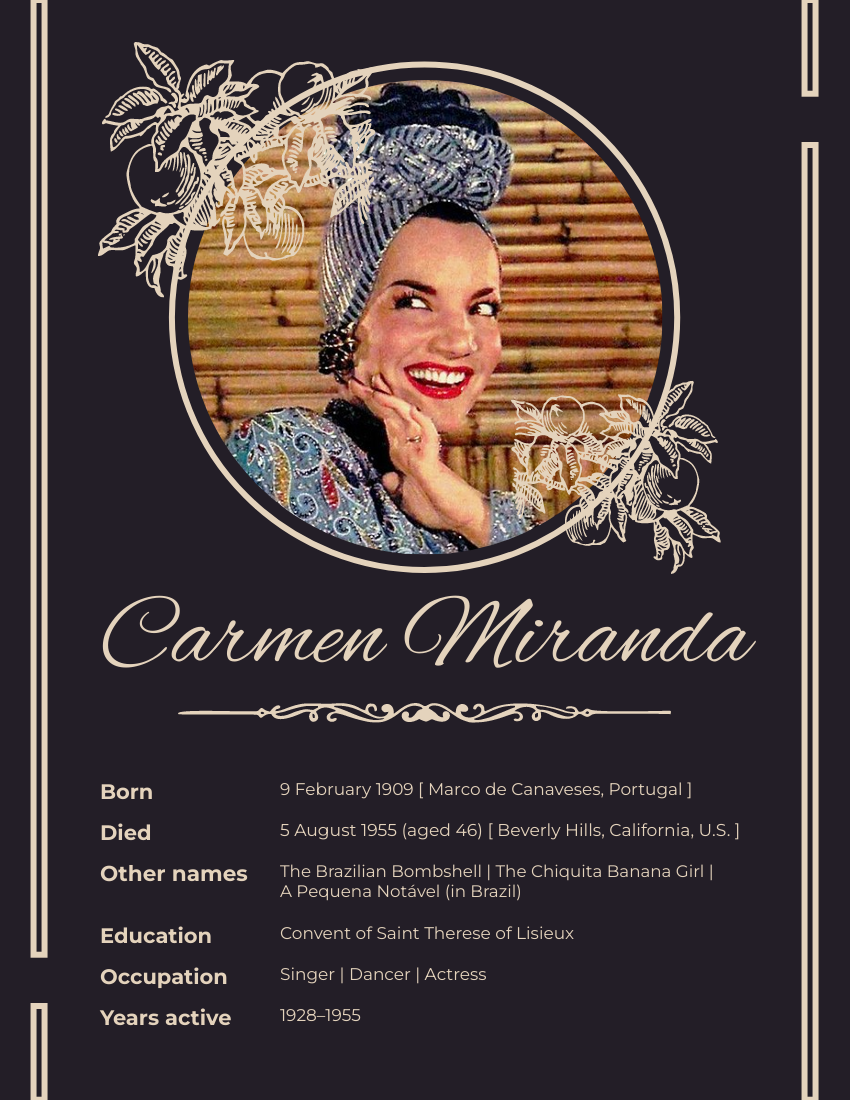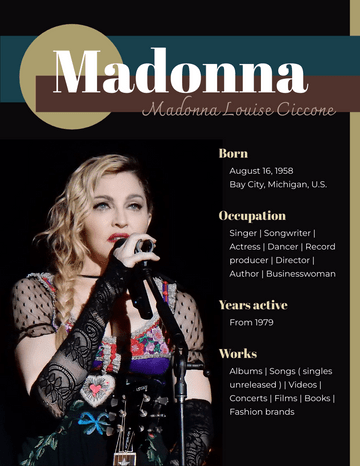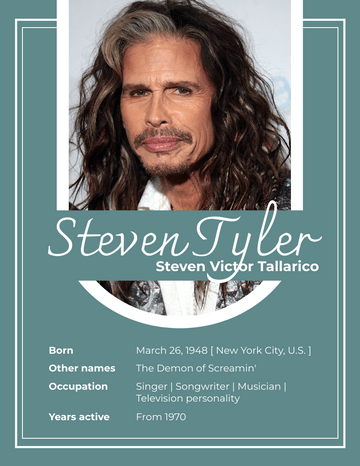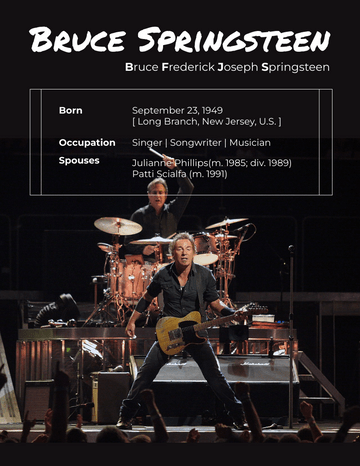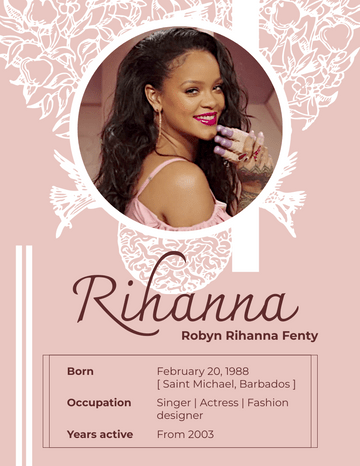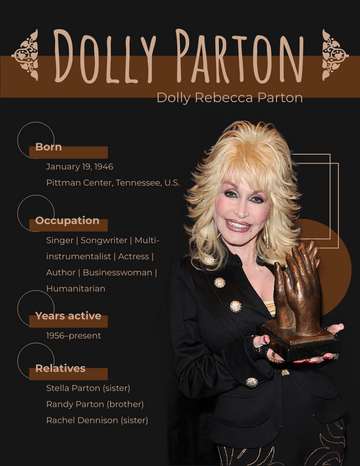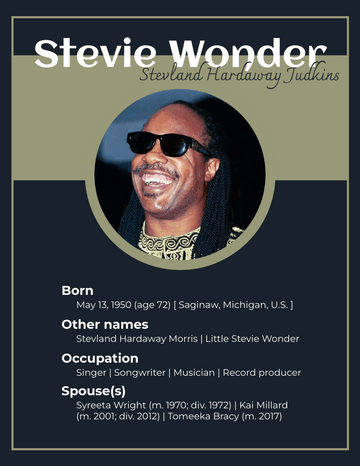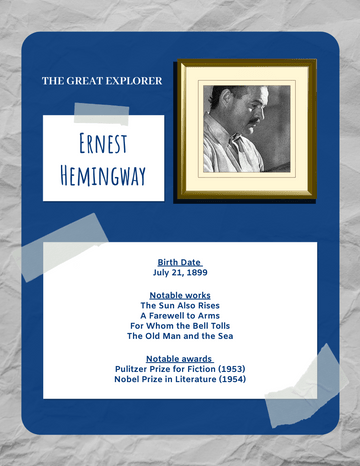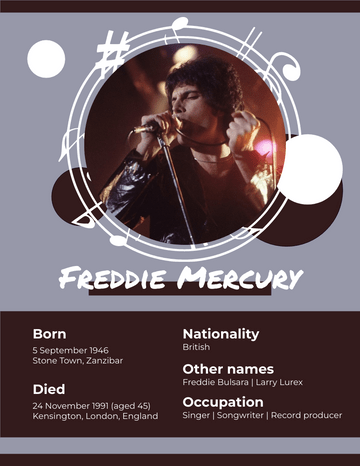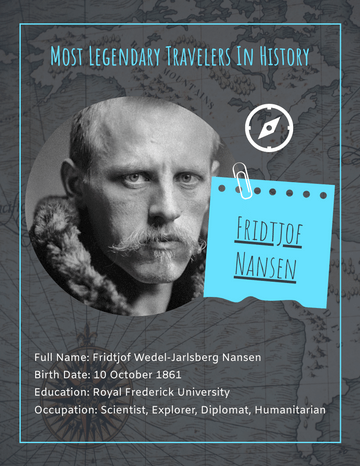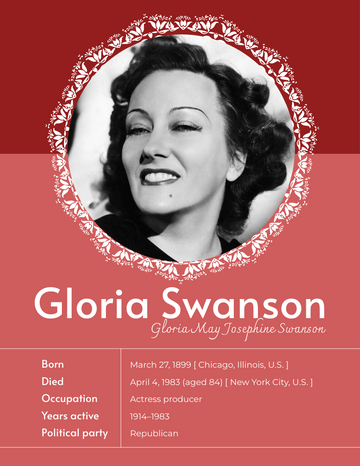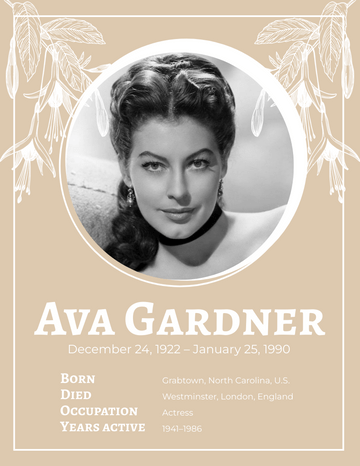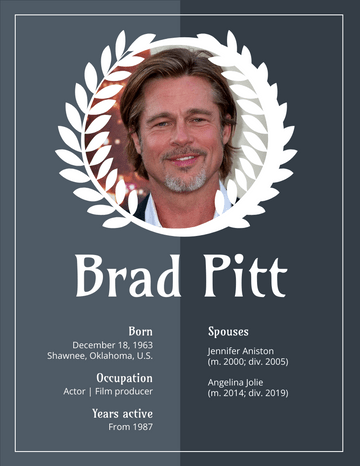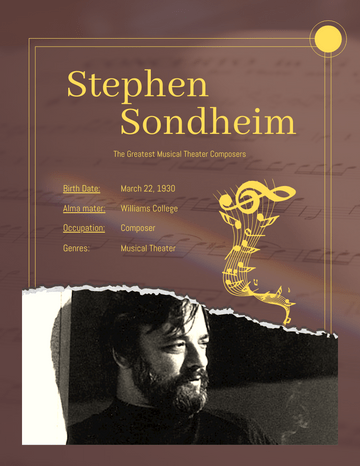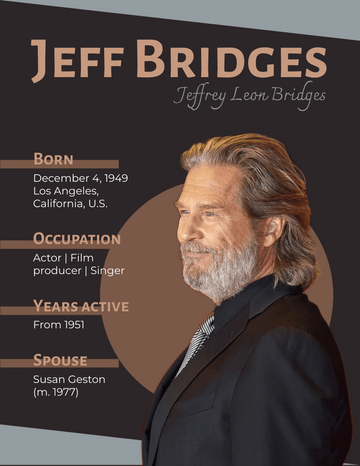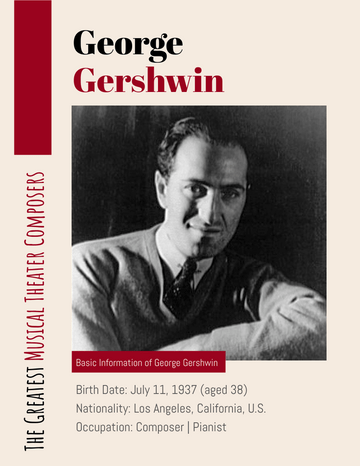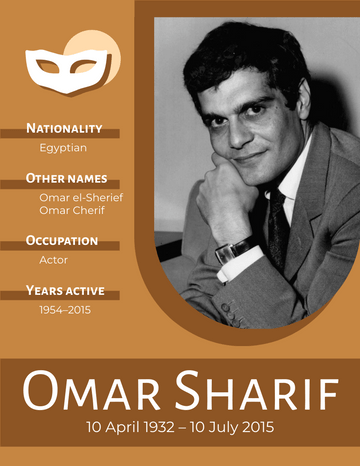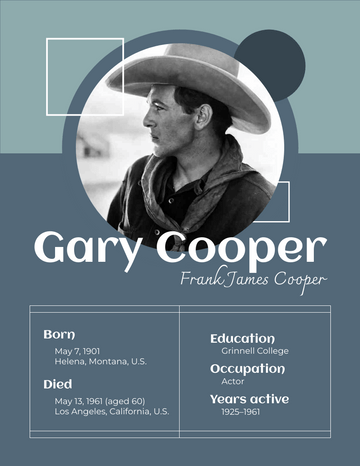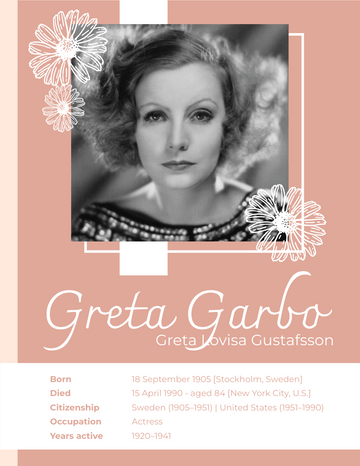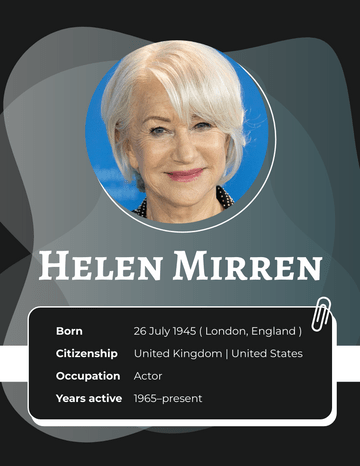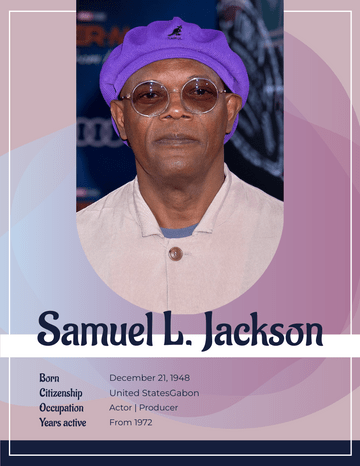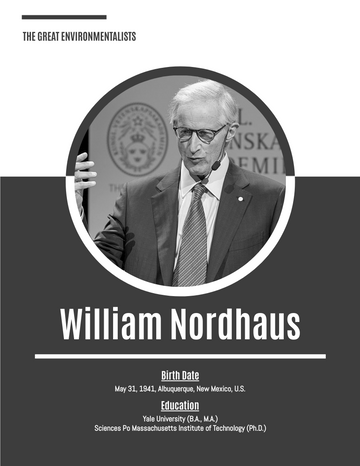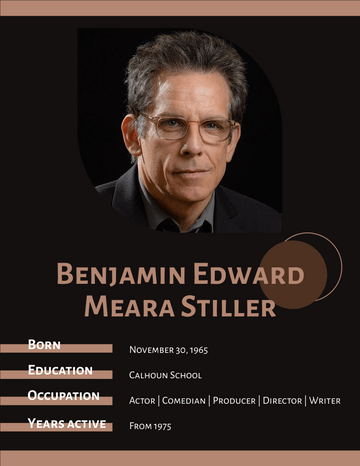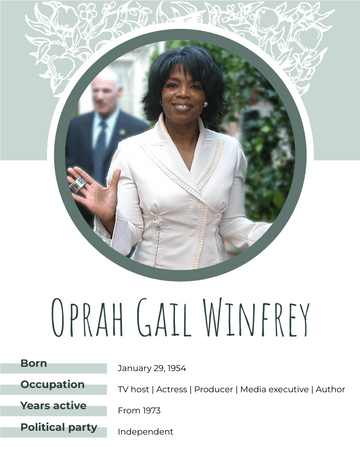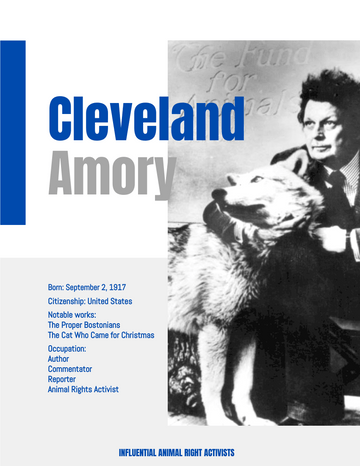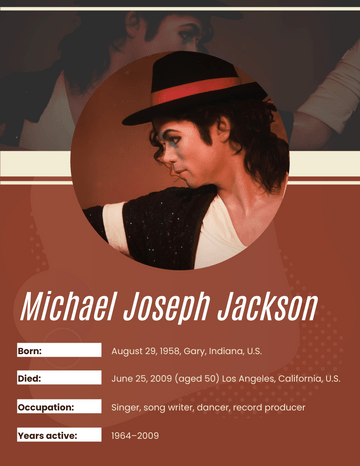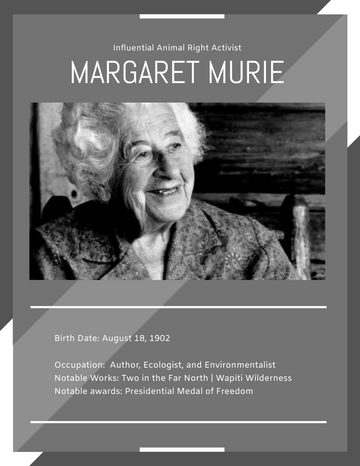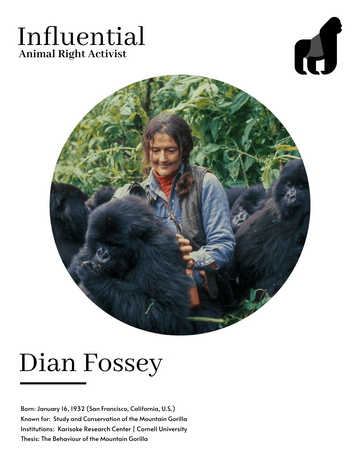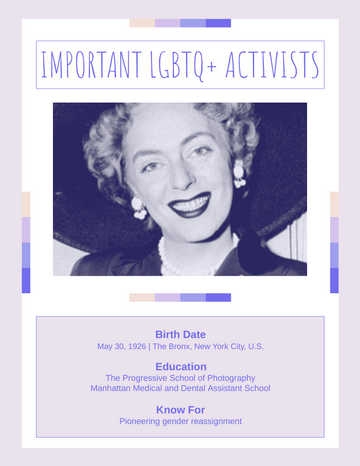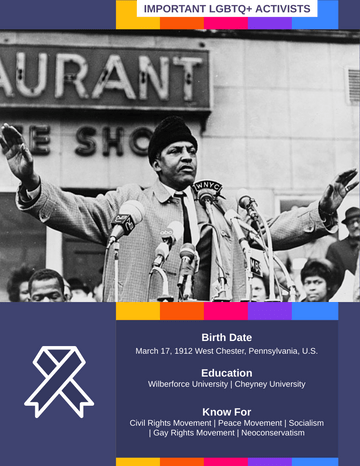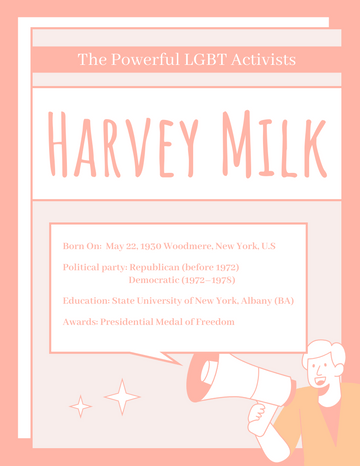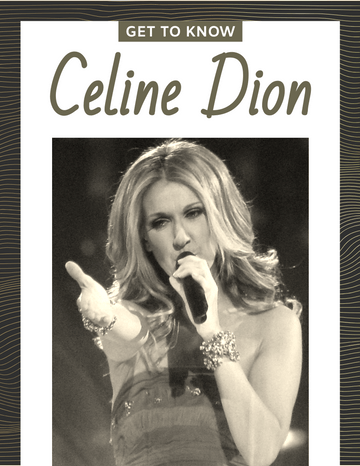Carmen Miranda Biography
Carmen Miranda
Born: 9 February 1909 [ Marco de Canaveses, Portugal ]
Died: 5 August 1955 (aged 46) [ Beverly Hills, California, U.S. ]
Other names: The Brazilian Bombshell | The Chiquita Banana Girl | A Pequena Notável (in Brazil)
Education: Convent of Saint Therese of Lisieux
Occupation: Singer | Dancer | Actress
Years active: 1928–1955
Carmen Miranda, GCIH, OMC (born Maria do Carmo Miranda da Cunha ) was a Portuguese-born Brazilian samba singer, dancer, Broadway actress and film star who was active from the late 1920s onwards.
Nicknamed "The Brazilian Bombshell", Miranda was known for her signature fruit hat outfit that she wore in her American films.
As a young woman, she designed hats in a boutique before making her first recordings with composer Josué de Barros in 1929. Miranda's 1930 recording of "Taí (Pra Você Gostar de Mim)", written by Joubert de Carvalho, catapulted her to stardom in Brazil as the foremost interpreter of samba.
Click here to read the flipbook.
Start Of Career
During the 1930s, Miranda performed on Brazilian radio and appeared in five Brazilian chanchadas, films celebrating Brazilian music, dance and the country's carnival culture. Hello, Hello Brazil! and Hello, Hello, Carnival! embodied the spirit of these early Miranda films.
The 1939 musical Banana da Terra (directed by Ruy Costa) gave the world her "Baiana" image, inspired by Afro-Brazilians from the north-eastern state of Bahia.
After That ...
In 1939, Broadway producer Lee Shubert offered Miranda an eight-week contract to perform in The Streets of Paris after seeing her at Cassino da Urca in Rio de Janeiro.
The following year she made her first Hollywood film, Down Argentine Way with Don Ameche and Betty Grable and her exotic clothing and Lusophone accent became her trademark. That year, she was voted the third-most-popular personality in the United States; she and her group, Bando da Lua, were invited to sing and dance for President Franklin D. Roosevelt.
In 1943, Miranda starred in Busby Berkeley's The Gang's All Here, which featured musical numbers with the fruit hats that became her trademark. By 1945, she was the highest-paid woman in the United States.
Image & Honors
Miranda made fourteen Hollywood films between 1940 and 1953. Although she was hailed as a talented performer, her popularity waned by the end of World War II. Miranda came to resent the stereotypical "Brazilian Bombshell" image she had cultivated and attempted to free herself of it with limited success. She focused on nightclub appearances and became a fixture on television variety shows.
Despite being stereotyped, Miranda's performances popularized Brazilian music and increased public awareness of Latin culture. In 1941, she was the first Latin American star to be invited to leave her hand and footprints in the courtyard of Grauman's Chinese Theatre and was the first South American honored with a star on the Hollywood Walk of Fame.
Miranda is considered the precursor of Brazil's 1960s Tropicalismo cultural movement. A museum was built in Rio de Janeiro in her honor and she was the subject of the documentary Carmen Miranda: Bananas is My Business (1995).
